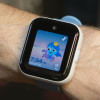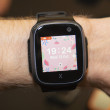Review: HTC EVO Shift 4G
Screen
The EVO Shift 4G's 3.6-inch capacitive display isn't the smallest touch screen out there, but it's hardly the largest either. Since the EVO Shift 4G packs in as many pixels (800 x 480) in a somewhat smaller space, the EVO Shift 4G enjoys a healthy pixel density. The result is a screen that looks smoother, cleaner, and free of pesky individual pixels poking your eye. The brightness of the LCD display is more than adequate for indoor use, though I found it lacking a bit when outside. Even a moderately cloudy day gave it trouble, with glare obscuring most of the screen. In my time with the device, the sun rarely shown brightly, but even a partly sunny day was too much for it.
Signal
The EVO Shift 4G has separate 3G and 4G radios. The 3G radio is on whenever the device is powered up and not in airplane mode. The 4G radio can be turned on or off at will. The EVO Shift 4G did well on Sprint's CDMA 3G network. In my home it captured two bars of signal strength, though that immediately jumped to three if I went outside. It lost all contact with Sprint's network in my basement, but this is typical of Sprint phones that I've tested. It also lost contact with the network in my local supermarket. When it was actively connected, though, I didn't miss any calls. Data speeds were mostly good, with a few noticeable slow downs here and there.
Turning on the 4G radio takes about one minute. Once it is active, it will find and connect to Sprint's WiMax network (if present). Sprint doesn't offer WiMax where I live, but I was able to take the EVO Shift 4G into New York City, where I tested it a bit. WiMax performance was spotty. It would connect to the WiMax network, only to lose it a few seconds later. It was rare that it maintained a solid connection for more than 10 minutes at a time. During that 10 minutes, web browsing was noticeably faster than browsing via 3G. Manhattan is a challenging environment for any cellular device, but I was disappointed with how the EVO Shift 4G performed in 4G mode.
Sound
Call quality with the EVO Shift 4G was good, bordering on very good. Most calls were clear, though every so often I encountered odd noises and such. The EVO Shift 4G can produce loud ringtones. Volume levels of the ringer and speakerphone were more than adequate. You'll easily hear the EVO Shift 4G in a crowded mall or busy office. Earpiece volume was also quite loud, if not bordering on painful. Set to the highest level, the earpiece speaker distorted a bit, but conversations weren't affected. The vibrate alert could have been a bit stronger, it wasn't quite as jarring as I like.
Battery
The EVO Shift 4G works great as a 3G phone. With HTC's FriendStream software constantly pulling down Facebook and Twitter updates to the device, it still managed to squeeze through an entire day with just 3G on. One full day is good, but a few more hours wouldn't hurt. Turning on 4G, however, nearly killed the battery in an instant. I turned the EVO Shift 4G on in New York City at 7:30 AM and immediately connected to the WiMax network. By Noon, when I was on my way to the bus station, the battery had less than 40% left, and I had barely used it beyond some light web browsing and email. I hadn't even set up FriendStream at that point. I left the WiMax radio on the rest of the day, and the EVO Shift 4G was dead by 3PM. That's not even 8 hours. If you have to get through a single day, leave 4G off. Only turn 4G on when you know you can plug in and charge during the day.


 Hands On with the T-Mobile SyncUp Kids Watch
Hands On with the T-Mobile SyncUp Kids Watch
 iPhone 14 Plus Offers a Big Screen For Less
iPhone 14 Plus Offers a Big Screen For Less
 HTC EVO Shift 4G
HTC EVO Shift 4G



